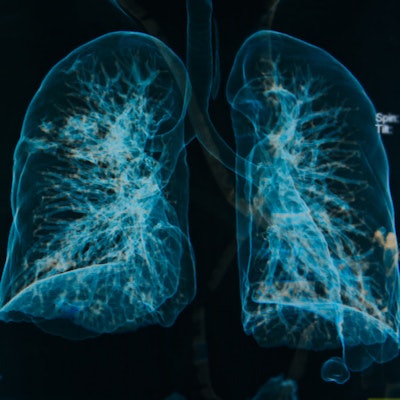
Dutch researchers have introduced a reporting system for assessing pulmonary involvement on chest CT in patients with suspected COVID-19, according to a paper published April 27 in Radiology.
A group led by Dr. Mathias Prokop, PhD, of Radboud University Medical Center in Nijmegen, hopes that the COVID-19 Reporting and Data System (CO-RADS) will simplify reporting of pulmonary involvement of COVID-19 on chest CT.
"Various attempts have been made to standardize reporting of CT for suspected COVID-19," the team noted. "[We have] developed a standardized assessment scheme for pulmonary involvement of COVID-19 to be able to compare data across institutions and populations and, thus, provide a basis for gathering scientific evidence and improved communication with referring physicians."
Prokop's group created CO-RADS to evaluate pulmonary involvement of COVID-19 on a scale of 1 (very low) to 5 (very high). The scale is to be used with patients who present with moderate or severe COVID-19 symptoms -- it is not intended as a substitute for other methods of confirming the presence of the virus, according to the authors.
"It should be noted that CO-RADS is a CT-based system that assesses the suspicion of pulmonary involvement in COVID-19," Prokop and colleagues wrote. "The actual interpretation of whether a patient suffers from COVID-19 needs to include other data, such as laboratory tests, clinical findings, and type and duration of symptoms."
Prokop's team evaluated CO-RADS using 105 chest CT scans of patients admitted to the hospital who had undergone reverse transcription polymerase chain reaction (RT-PCR) testing and had symptoms of the virus. Eight radiologists from seven Dutch hospitals assessed the CT scans using the CO-RADS system; Prokop's group evaluated the area under the receiver operating characteristics curve (AUC) to measure the performance of the CO-RADS scale in predicting the outcomes of RT-PCR and clinical diagnosis.
AUC values were high in both comparisons, Prokop and colleagues found.
| Performance of CO-RADS for predicting COVID-19 outcomes | ||
| Measure | Predicting RT-PCR outcome | Predicting clinical diagnosis |
| AUC | 0.91 | 0.95 |
There was absolute agreement among the eight radiologists in 573 of 840 observations (68.2%). The false-negative rate for CO-RADS category 1 was 5.6%, while the false-positive rate for CO-RADS category 5 was 0.3%.
"Our evaluation in a random sample of patients with symptoms suggestive of COVID-19 showed moderate to substantial interobserver agreement, despite the fact that all observers were from different hospitals and had different levels of exposure to CT in COVID-19 patients," the group wrote. "Observer agreement was highest in categories CO-RADS 1 and 5."
The CO-RADS assessment scheme can help simplify reporting of pulmonary involvement of COVID-19 on chest CT, but its efficacy must continue to be tested, according to authors.
"The system was developed in the acute stage of the COVID-19 pandemic with rapidly rising case numbers and a parallel restriction in resources," they concluded. "Whether its accuracy remains high in other settings may depend on the prevalence of the disease, the duration of the pandemic, and the prevalence of other diseases with overlapping CT morphology."





















